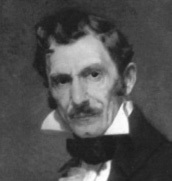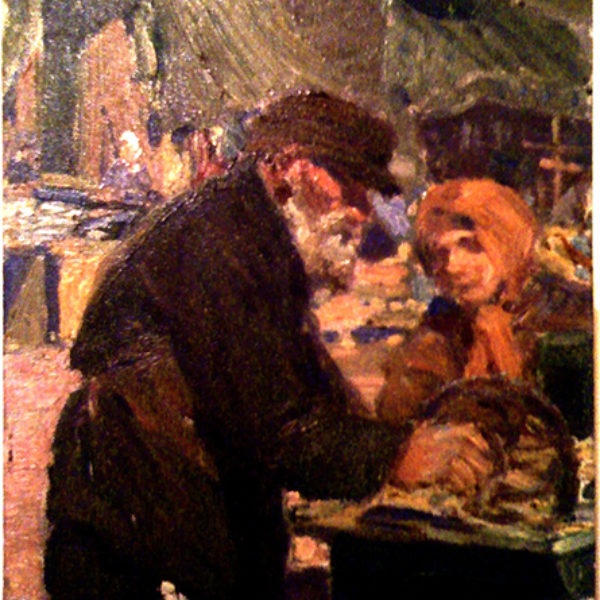
Oskar Gross
b. 1871, Vienna, Austria - d. 1963, Chicago, IL
Oskar Gross was born in Vienna, Austria. His father, Rudolph Gross, was a prominent architect and engineer who wanted his son also to be an architect. Gross showed early talent in art rather than architecture, however, and enrolled in the Imperial Academy of Fine Arts in Vienna. He was successful at school and began a lucrative career as a portraitist, opening an expensive studio space in Vienna, though he was not able to maintain it. He was elected a full member of the Association of Viennese Painters and Sculptors, and worked as a cartoonist for a comic paper in Munich. In 1898, he won a mural competition for the Hungarian State Pavilion, which was being designed for the Paris Exposition of 1900. Using violet ink, he designed a motif of Hungarian peasants with horses, and the overseers liked it so much they redesigned other parts of their Pavilion to conform to his mural.
Impressed by this design, Chicago architect Daniel Burnham invited Gross to come to Chicago to decorate some of Burnham's buildings. Although reluctant to leave Vienna, Gross made the trip to Chicago in 1903 at age 32 and decided to settle there. He was able to function better than most foreign visitors because his mother, who had lived in New York City for five years as a child, had taught him English. He was financially successful soon after his arrival, but Burnham—who had found him many commissions—died in 1911. And when department stores entered the building decoration trade, Gross was out of work.
Gross first exhibited at the Art Institute of Chicago in 1911 and began to associate more with painters rather than architects, developing a camaraderie and lifestyle similar to the one he had led in Vienna, where he had been associated with the Vienna Secession. He set up a studio in Chicago and devoted himself to figure and genre painting. During his time in Chicago, he belonged to the Arts Club, Cliff Dwellers, Chicago Painters and Sculptors, and the Palette and Chisel Club. He died there in 1983.
Although most of his portrait commissions were from members of the upper class, Gross was much more interested in working class subjects. For example, his small oil on board, Maxwell Street Market, painted in the 1920s, shows an old man arranging his wares amidst the busy street market glimpsed over his shoulder. Gross applied the oil paint with thick impasto to render the dark and heavy form of the vendor, who leans toward his female customer. She wears a head scarf but otherwise bears few distinguishing facial features. Gross's interest in depicting the urban poor became especially relevant after the 1929 stock market crash.
Lisa Meyerowitz
References
Bulliet, C. J. “Artists of Chicago Past and Present: No. 59: Oskar Gross” Chicago Daily News, April 4, 1936.
Gross, Oskar. Pamphlet file P02283. Ryerson Library. Art Institute of Chicago.
Artist Image: Oskar Gross / believed to be a self-portrait. Prairie Styles.
